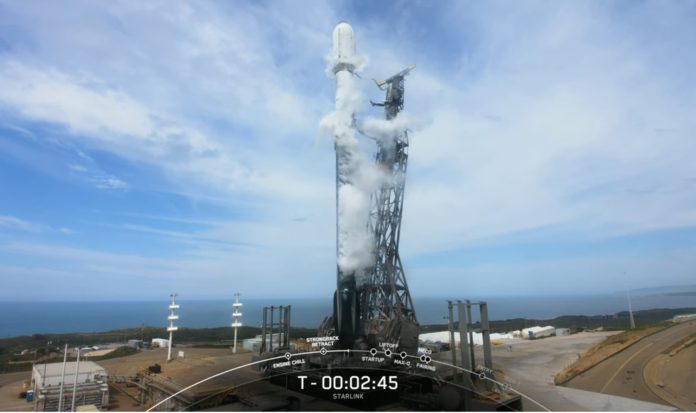Update: Launch delayed for 24 hours.
Anchorage-based Pacific Dataport is gearing up to launch its first purpose-built satellite, named “Aurora 4A” (also known as Arcturus), on Wednesday.
The launch will take place from the Kennedy Space Center in Cape Canaveral, Florida, aboard the sixth SpaceX Falcon Heavy from pad 39-A, with the scheduled launch window set for 3:29 pm Alaska time, after being postponed from its original date of April 18.
Pacific Dataport is a satellite communications company that was created by Alaskans for Alaskans, with significant investment and interest from Microcom, Space Partnership International, and others.
The company aims to bridge the current digital divide in Alaska by utilizing the expertise and experience of Microcom in satellite communications in rural Alaska, as well as Space Partnership International’s satellite system design and development capabilities.
“The Aurora 4A will enable all Alaska providers to offer broadband at substantially lower prices and much faster speeds, with and without data caps,” says Shawn Williams, vice president of government affairs and strategy for that Anchorage firm. “Pacific Dataport customers include telecoms, ISPs, tribes, governments, schools, and health clinics.”
Pacific Dataport is committed to carrying on Microcom’s legacy of being a pioneer in bringing new and innovative communications technology to Alaska, the company said. They’re doing so with satellites that weigh about 800 pounds — relatively light.
The satellite launch has been in the works for five years, and the SpaceX Falcon Heavy, known as the second most powerful rocket in history, will be used for the sixth time in its history for this launch, according to the Anchorage-based provider.
The goal of Aurora 4A is to provide satellite TV and broadband services to rural areas of Alaska.
Chuck Schumann, CEO of Pacific Dataport, expressed the urgency of addressing the growing digital divide in Alaska, stating, “We just couldn’t take it any longer. The digital divide was growing every month in Alaska, and we knew that utilizing the newest innovations in satellite technology was the answer. So, we set our course and put that ship in motion.”
Aurora 4A follows a series of satellites with similar names that were launched decades ago to help connect Alaskans. This new satellite boasts cutting-edge technology, including on-board processing and a smaller physical size. It also has “high-throughput” capabilities, allowing for significantly more data capacity than older satellites. Aurora 4A will be used for transmitting both broadband and cellular backhaul data, showcasing its advanced capabilities.
For those hoping to view the launch online, a live video feed can be found at the SpaceX YouTube page HERE. A livestream will begin about five minutes before liftoff. The event will look similar to this video of the most recent Falcon 9 launch of a month ago, its 8th mission:

Fiiine! Mmm. Good to see there are still some men building with their minds and hands.
Thank you for sharing this! I’ve never had my teenage son read a MustRead article, but he will today! 🙂
Thursday now at 7.29 pm Florida time.
Friday now. We’re having some bad weather.
There is no way these geostationary services can compete with Starlink in the long run. I’m surprised they still try. I suppose they set in motion funding years ago and now must go through the motions to justify their lobbying.
39a launch Tower got hit by lightning last night. All systems are go for Friday although they say there is a 30% favorable chance of launch. We’re still having bad thunderstorms down here daily. We’re supposed to get an additional 3 in of rain in the next couple of days. Looks like the rainy season is here finally.
Abort. Try again tomorrow.
Sunday night now.